Math menus are one of my new favorite items to use in class! They give students choice and allow them to move around the room, two things that are really important for creating an engaging math classroom! Keep reading if you want to learn more about the basics of math menus!
What are Math Menus?
If you have ever heard of choice boards, math menus are very similar. And like choice boards, there are a ton of different ways to structure them and use them. Here is how I set them up:
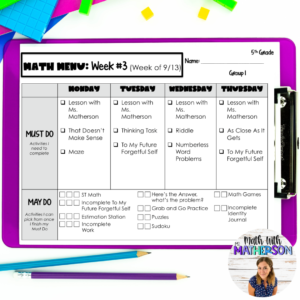
Each day has a few Must Do activities. For this group, they meet with me each day, then they have a few other activities they are required to complete. When they are not meeting with me, they are working on those activities. They can complete them in any order they would like. When it is time to meet with me they pause what they are doing and come meet with me. After meeting with me they go back to their math menu, check off that they met with me, and continue with their Must Do activities, checking them off as they finish.
When they finish their Must Do activities for the day, they move on to their May Activities. These are done by the week. ST Math has three check boxes next to it. That means that this week, they can do ST math up to three times.
Why Math Menus?
Math centers used to be my all time favorite thing. They had so many great benefits for students. But the one thing that always discouraged me was the time constraints that came with math centers. If each center was 10 minutes, that meant I only had 10 minutes with the group in front of me. If each center was only 12 minutes, that means that a group had to finish that center in 12 minutes. Of course I always provided extra time in the week for students to finish unfinished work, but even as an adult I get stressed out when I do not finish things in the allotted time, so imagine how a kid will feel!
Then I decided to switch to math menus. It provides the same small group options along with the same activities, but myself and the students were not under any time constraints besides the amount of time we had in class (which is not enough!).
The Benefits of Math Menus
One of the main reasons I switched to math menus was because there are less time constraints. Another reason I love math menus is for student choice. Within the Must Do items, students can decide what they do first. When they finish their Must Do activities they have a ton of activities to choose from! May Do activities provide a multitude of activities that are accessible to all students! It also is a great way to practice responsibility. Students need to monitor their own menus. If they check off games Monday and Tuesday, that means they cannot play any more games this week since there are only two checkboxes.
It also helps me differentiate. Every group does not have the same math menu. This allows me to meet with different groups on different days, or every group each day, depending on the objective and lesson. It also means that not all students are working on the same activity all of the time, so there is a less likely chance for groups to be interacting with other groups when they shouldn’t be.
Another reason why I love math menus is that there are endless possibilities for the Must Do items. It is a great way to spiral old content. Students could come to me and be working on adding fractions, and then go back to their table and be working on numberless word problems. Spiraling standards and strategies like this keeps things fresh in students minds. It also allows them to make connections that they would not see if everything they were doing was from one unit or standard.
Try it Out!
Overall, math menus have supported my desire for a student centered classroom. The basics of math menus that are described here is still a workshop model, just with no time constraints! While I work with a small group I can be confident that students will not be coming over and asking what they should be doing. They are gaining responsibility and feel like they have a choice in our classroom. If you would like to get started with Math Menus and looking for a template, click here! And if you are ready for even more, sign up for Math Menus: The Course to get everything you need to start using them TODAY!




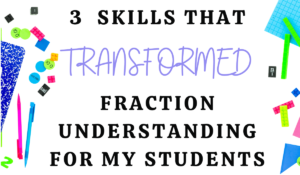
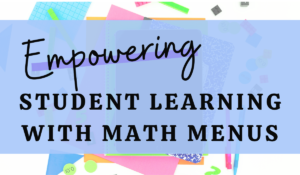
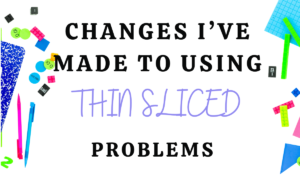

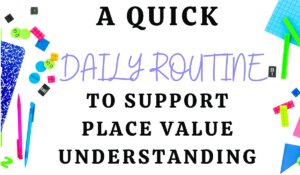
17 thoughts on “The Basics of Math Menus”
Great idea!! Do you have an editable version of the math menu pictured?
The only editable version I have is linked in the blog post.
I would love to know more about the differentiation piece! Did you do ability grouping or mixed abilities? This seems like a great way to do centers. I have gone back and forth using the timers.
I do mixed groupings always. But when they come to the rug in their small groups, I am able to differentiate a lot. One of my favorite ways to do this is to do thin slicing of problems.
I love this idea as I’m constantly running out of time with my small groups. My question to you is, do you give a mini lesson before you start your Math block, or do you teach the lesson within your small group time? In essence, how do you begin your Math block? I’d love any insight from you!
Great question! Sometimes we do a preview whole group (like watch a video or do a notice and wonder) or sometimes we do the whole mini lesson in our small groups. I also love to start class with things like Esti-Mystery and Estimation Clipboard. If you want some ideas make sure to signup for my email list because you get a freebie with some AWESOME websites (including those) that are great intros to class.
I loved your preview during the Math Summit. I would love to implement this into my classroom if not this year definitely next year. I would love to get more information on how to begin. Thank you for your ideas.
I love this! How do you handle grading with the May Dos?
Great question! I don’t grade the May Dos. They are framed as a time to practice and have fun. Of course in the beginning some kids ask why they should do them if they are not graded, and we have a discussion about how they help strengthen your brain and your problem solving skills for things that are graded.
What do you do if students don’t complete the must do section by the end of the week? I want to hold them accountable to complete it. Some students goof off or take their time so they don’t have to do as much work. I struggle with finding the balance.
I put menu completion into their grade as a participation grade.